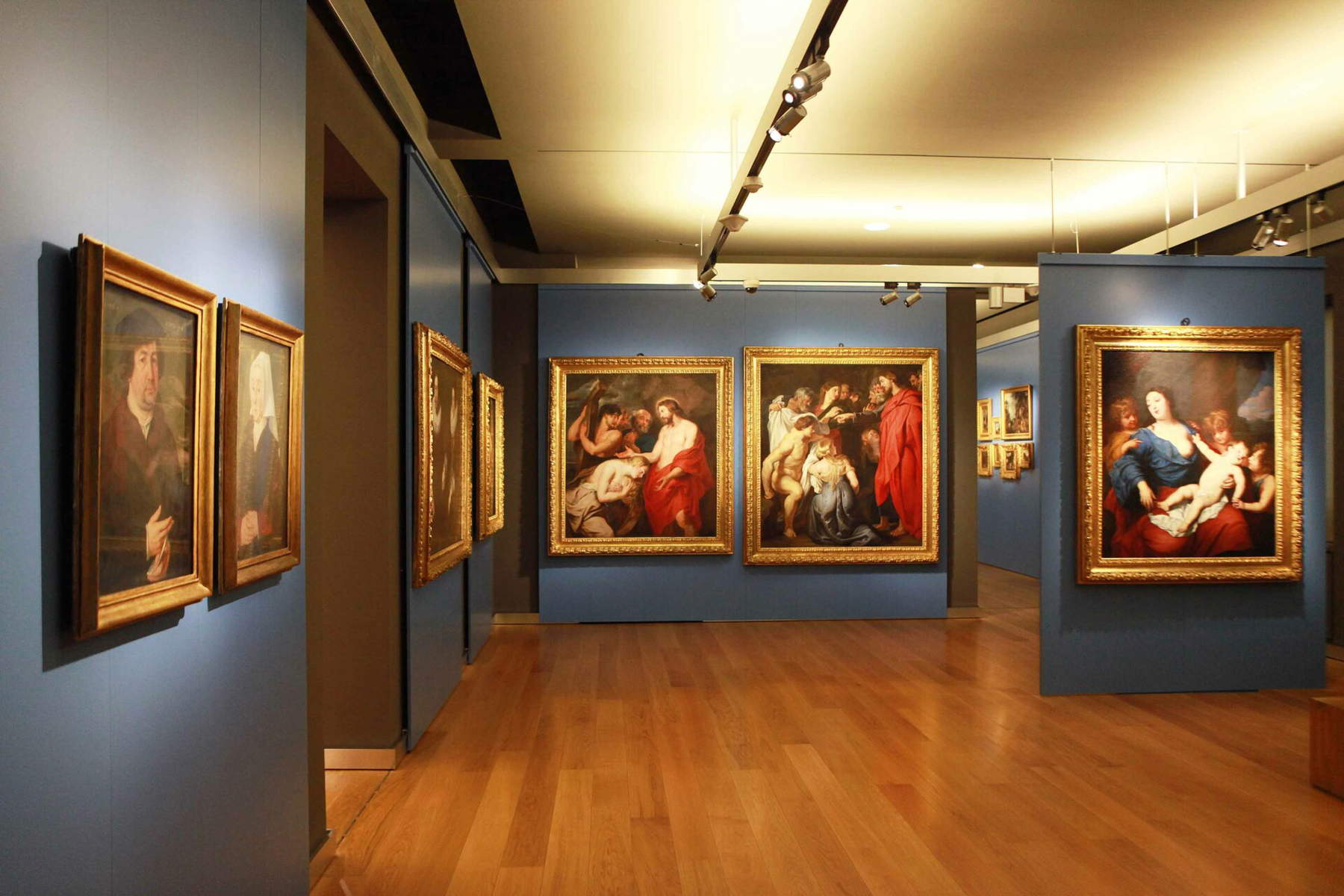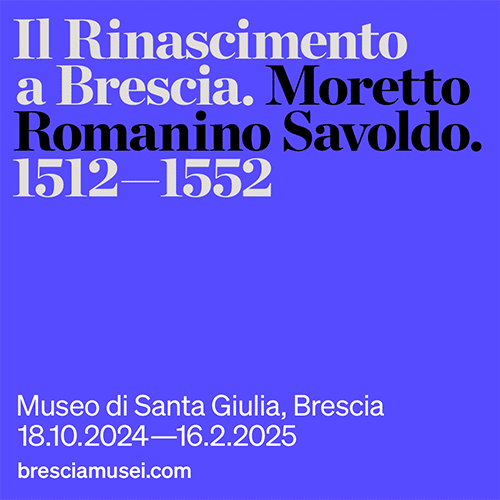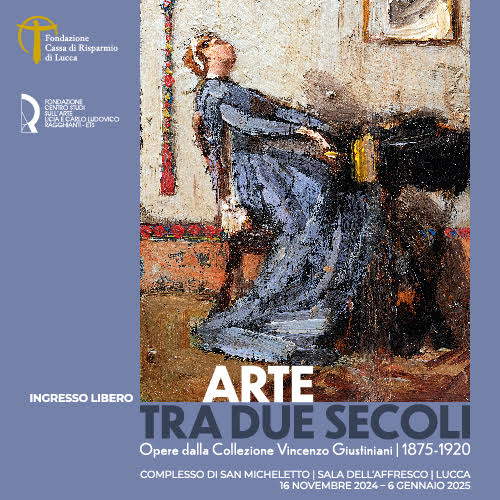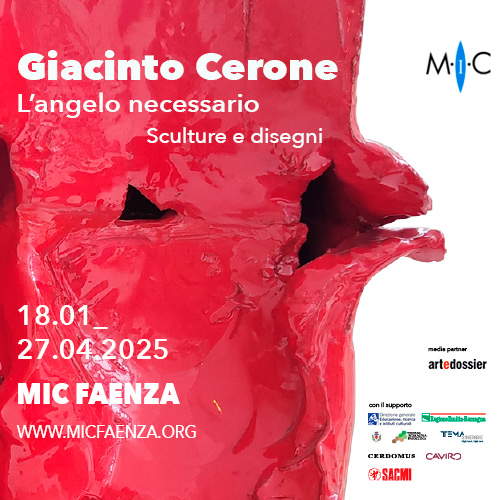Turin, Royal Museums remount the collection of Prince Eugene of Savoy Soissons
The Royal Museums of Turin are continuing their work of reorganizing the valuable collections of ancient art, and after the recent display of the Gualino collection and eighteenth-century painting, the second floor of the Sabauda Gallery will be open to the public from Saturday, May 11, 2024, with the presentation of the new display of the renowned collection of Prince Eugene of Savoy Soissons. This collection, dedicated to one of the leading figures in European events between the seventeenth and eighteenth centuries, includes masterpieces by Nordic primitive masters, works of seventeenth-century Flemish and Dutch painting acquired by the Savoy family during the seventeenth to nineteenth centuries, and works from the Italian schools of the seventeenth century, with special emphasis on those created by women painters between the sixteenth and seventeenth centuries. Funding for this work on the collections was fully secured by the Ministry of Culture as part of the three-year program 2022-2024, which was made possible thanks to the Budget Law of 2022 (Law No. 234 of December 30, 2021), which increased the fund for the protection of cultural heritage, as established by Article 1, paragraphs 9 and 10, of the 2015 Stability Law (Law No. 190 of December 23, 2014).
Following previous museographic choices for the same exhibition route, the new layout, curated by Annamaria Bava and Sofia Villano, and designed by Loredana Iacopino architecture, presents more than 180 works. Some of these works, which remained in reserve collections for years, are now displayed on multiple levels along the walls and also in the central corridor, significantly enriching the visitor experience.
The Sabauda Gallery, part of the Royal Museums, houses one of the most important collections of Flemish and Dutch painting in Italy in terms of chronological breadth and variety of genres. This collection has developed over time thanks to the Savoy family’s constant attention to Northern Europe. Since the 15th century, the Savoy duchy has enriched its collections with works by Nordic artists, many of whom were also active at the Savoy Court. Seventeenth-century inventories indicate a considerable presence of Flemish works of all kinds, preceding the purchases made by Charles Emmanuel III in Venice and the arrival in Turin in 1741 of Prince Eugene’s extraordinary Viennese collection.
By the mid-18th century, the Savoy picture gallery could boast “a vast collection of the Flemish masters” as the king of Sardinia possessed “many precious paintings,” as recalled by the engraver Charles-Nicolas Cochin, custodian of the French king’s drawings. Further additions have been recorded since 1832, when the Royal Gallery was opened to the public at the behest of Charles Albert of Savoy Carignano.
The exhibition begins with two rooms devoted to Flemish painting of the 15th and 16th centuries, illustrating its development over two centuries, from the influence of the great masters of the 15th century to the sophisticated language of international Mannerism of the late 16th century. The selection of Flemish Primitives includes works of great historical significance, such as Jan van Eyck ’s celebrated panel of exceptional quality depicting The Stigmata of St. Francis, Rogier van der Weyden ’s two panels with A Worshipper at Prayer and The Visitation, and the Madonna and Child attributed to a follower of Petrus Christus. The itinerary also includes Hans Memling ’s magnificent panel with Scenes from the Passion of Christ and Bartholomeus Spranger’s Last Judgment , executed on copper around 1570-1571 for Pope Pius V, which reworks a triptych by Beato Angelico.








From the Palazzo Durazzo in Genoa, acquired in 1824 by Charles Felix of Savoy along with its furnishings, come two works of significance: a large panel depicting theAdoration of the Magi by the Flemish master named after this work, and a panel painted on both sides by Bernard van Orley, court painter to Margaret of Austria, governor of the Spanish Netherlands. Two triptychs of similar type are dedicated to the Crucifixion, one of which is considered to be among the finest works by the so-called Master of the Female Half-Figures: under this conventional name are works by different artists, probably working at the same workshop in the first half of the 16th century, presumably in Antwerp. Recurring themes include the depiction of elegant ladies, often portrayed while reading or playing musical instruments, as in the case of the panel depicting the Lute Player.
Sixteenth-century Nordic portraiture is represented by three very different works: Cardinal Robert de Lénoncourt’s Portrait of Cardinal Robert de Lénoncourt by Corneille de Lyon, a Dutch painter by birth but Lyon by adoption; the vigorous Portrait of a Man with a Letter, attributed to Dirck Jacobsz; and the Portrait of a Warrior attributed to Hendrick Goltzius, a work of remarkable quality that seems to recall Giorgione’s masterpieces painted in Venice in the early sixteenth century.
An interesting example of genre painting is the Study of a Lawyer, while the sophisticated taste of late International Mannerism, widespread in Italian and European courts, is highlighted in the canvas by the Flemish Lucas de Heere, which evocatively depicts the rare theme of theAllegory of the Liberal Arts in Time of War.
The first part of the central corridor is devoted to a selection of Italian and Flemish still lifes from the seventeenth and eighteenth centuries, which have arrived at various times in Turin collections since the early seventeenth century. This space offers an opportunity to appreciate the spread and success that this artistic genre has encountered since its origins even at the most important international courts. Through the dark gray portal opening, which symmetrically separates the Gualino Collection from the nucleus dedicated to Prince Eugene, visitors come into contact with the historical period and aesthetic taste of Eugene of Savoy Soissons (Paris, 1663 - Vienna, 1736). He was a brilliant strategist and commander-in-chief of the Habsburg army, who became famous for stopping the advance of the Turks in Europe. The ten great battles, painted by Jan van Huchtenburg, depict some of the crucial moments of his military campaigns, from the Battle of Zenta (1697) to the Battle of Turin in 1706, during which he distinguished himself alongside his cousin Victor Amadeus II against the French siege of the city, to the Battles of Petervaradino (1716) and Belgrade (1717).
Eugene of Savoy, as well as a skillful strategist, was also a refined and cultured intellectual whose artistic heritage was mainly housed in his Viennese palaces, such as the City Palace and the sumptuous suburban residence of Belvedere. The engravings in the series “Residences memorables de l’incomparable heros de nôtre siècle,” made to drawings by Salomon Kleiner and published between 1731 and 1740, immortalize the beauty of these mansions and their lavish arrangements. After Eugene’s death in 1736, his estate passed to his niece Victoria of Savoy Soissons, who put the extraordinary collection up for sale. Thanks to the diplomatic efforts of Count Luigi Malabaila, the Savoy ambassador to Vienna, Charles Emmanuel III of Savoy succeeded in acquiring the picture gallery, which included works by the most distinguished masters of seventeenth-century classicism such as Nicolas Poussin, Guido Reni, and Francesco Albani, as well as a remarkable selection of Flemish and Dutch painting with masterpieces by Antoon van Dyck and works by artists such as Jan Brueghel the Elder, Paul Bril, Gerrit Dou, Jan Griffier, Paulus Potter, and David Teniers.
Prince Eugene’s extraordinary collection of paintings, gathered through an extensive network of contacts in Italy and Europe, was displayed in his residences according to precise aesthetic criteria, decorating reception rooms, galleries and cabinets. The current arrangement of works in the rooms of the Galleria Sabauda takes into account the furniture choices and visual evidence left by Salomon Kleiner’s engravings, which depict various rooms adorned with numerous paintings later transferred to Turin. The walls covered in velvet upholstery and gilded paneling of the Stadtpalais in Vienna, for example, were adorned with predominantly historical and religious paintings, including works by Nicolas Poussin, Guido Reni, and Antoon van Dyck. The Upper Belvedere, on the other hand, featured works from the late Mannerist Emilian figurative tradition and classicist Bolognese painting, as well as paintings from the Venetian and Flemish schools, including works by Pietro Vecchia, Guido Reni, and Antoon van Dyck.











Much of the seventeenth-century Flemish and Dutch collections belonging to Prince Eugene were housed in the painting cabinet of the Upper Belvedere in Vienna, a remarkable space that aroused great interest among travelers of the time. Located between his private bedroom and the library, this cabinet was furnished according to the standards of the time, with the works arranged symmetrically to completely cover the walls. Above a blue damask covering hung ninety-eight small paintings, framed in finely carved gilt wood, the restoration of which has been preserved to the present day. Among the works displayed in the cabinet were paintings by David Teniers II, four of which are currently on display, prized by the prince for their vivid realism and meticulous depiction of genre scenes and tavern interiors. In addition, there was a significant collection of works by the Fijnschilder group, known as the “fine painters” of Leiden, characterized by their attention to detail and richness of color. Among these works displayed in the Sabauda Gallery are compositions by Gerrit Dou and his pupil Frans van Mieris, Godfried Schalken, and Caspar Netscher. Of particular interest is Dou’s painting, The Girl at the Window, which, in addition to extraordinary technical mastery, suggests a delicate balance between sensuality and innocence, reflected in the details of the scene.
Another artist highly appreciated by Prince Eugene and European collectors was Jan Griffier, a painter active in the Netherlands and England. His landscapes were exhibited in the Lower Belvedere in Vienna, the prince’s favorite summer residence. The Galleria Sabauda presents thirteen works from his collection, one of the most significant in Italy in terms of quantity and quality, comparable only to that of the Gemäldegalerie Alte Meister in Dresden. Griffier stood out for his skill in depicting views that combined the topographical precision of cities with the artistic suggestion of mountain and river landscapes, enriched with details of everyday life, as in the case of the work Winter, considered one of his masterpieces.
The new display on the second floor of the Pinacoteca also features works acquired by Charles Emmanuel III in 1737, in conjunction with negotiations for the acquisition of Prince Eugene’s collection. This is the personal collection of Giovanni Battista Bodissoni, a resident of Venice and descendant of a noble family originally from Brussels. To assess the quality and condition of the works, Charles Emmanuel III sent Claudio Francesco Beaumont, the first court painter, to Venice. The Savoy collections were further enriched with a considerable number of Dutch and Flemish works, including portraits, still lifes, genre scenes, sacred paintings, landscapes, and interiors, documenting the style and themes of Northern European artistic culture between the 16th and 17th centuries.
Another section highlights the Savoy’s deep interest in Dutch and Flemish painting from the 17th to the 19th century. In the foreground is Rembrandt van Rijn’s Sleeping Old Man, a remarkable early masterpiece by the master, purchased in 1866 and one of the few autograph paintings by the Dutch artist in Italian public museums. Next to it are two replicas of self-portraits by the artist of good stylistic quality. The section also includes portraits of members of the nobility and upper middle class by painters associated with the school of Rubens and Van Dyck, such as Jacob Jordaens, Cornelis de Vos, and Jan Cornelisz van Loenen, as well as well-known Amsterdam and Leiden portraitists such as Nicolaes Eliasz Pickenoy and Joris van Schooten.
Among works of allegorical and moral significance, we find a fine composition on Feast in a Ballroom, warning about the dangers of courtship, attributed to a collaboration between Frans Francken the Younger and Paul Vredeman de Vries. Other examples include The Vanity of Human Life by Jan Brueghel the Younger, which reflects on the fleeting nature of fame and earthly wealth, andInterior with Still Life and Animals by Peeter Gijsels, which combines decorative taste with realistic attention to detail. Landscape painting is represented by works by artists such as Roelant Savery, Gottfried Wals, and Cornelis van Poelenburgh, while the still life genre is exemplified by Peter Binoit’s Dinner Table, characterized by refined elegance and delicate poetry. Among the sacred subjects, the Madonna of Roses, painted by four hands by Hendrick van Balen the Elder and Jan Brueghel the Younger, and the Repentance of St. Peter by Gerard Seghers stand out.








Leaving the rooms devoted to Nordic painting, the tour continues with works from the Italian schools of the 17th century, showing the collecting choices of the Savoy dukes and the subsequent 19th-century enrichments. The Genoese Baroque is represented by the chromatic opulence of Giovanni Benedetto Castiglione’s Bacchanal, the portraits of Bernardo Strozzi and Jan Roos, and the latter’s Holy Family , which testifies to his stay in Genoa. The Roman art scene is illustrated by the Madonna of the Rose by Giovanni Battista Salvi known as Sassoferrato and paintings of Marattesque culture. Significant examples of Roman classicism in the second half of the 17th century include canvases from the Aeneid by Giovanni Ghisolfi and landscapes with waterfalls by Gaspard Dughet. Finally, Bolognese painting is represented by Bacchus and Ariadne by Giovanni Antonio Burrini, acquired in 2022 by the Ministry of Culture for the collections of the Royal Museums.
The next room in the museum itinerary focuses on the artistic culture of the Savoy duchy in the seventeenth century, a period characterized by an important renewal led by some of the main protagonists of the Piedmontese art scene. In the 1930s and 1940s, Duke Victor Amadeus I appointed Francesco Cairo as court painter, an emblematic figure of Lombard Baroque, known for works such as the Finding of Moses by the Pharaoh’s Daughter, where Madame Royal Christina of France is recognizable in the princess’s face. Shortly thereafter, in the early 1650s, the Lorraine painter Charles Dauphin arrived in Turin, achieving great success in commissions from the Savoy family and the princes of Carignano, contributing to a marked Baroque development in local art, in line with Parisian trends. In 1658, the Flemish Jan Miel, after a long period in Rome, moved to Turin in the service of Charles Emmanuel II, influencing the decorations of the Royal Palace and the Reggia di Venaria and introducing Roman academic culture. At the end of the century, Daniel Seiter, of Viennese origin, worked for Victor Amadeus II, contributing to the renovation of the royal apartments and painting the gallery frescoes, still visible today. In addition, Andrea Pozzo, a renowned European painter and architect, worked in Piedmont in the 1960s and 1970s, creating altarpieces and fresco cycles for Jesuit churches in Turin and Mondovì.
The final room of the new exhibit focuses on women’s painting between the 16th and 17th centuries, a period in which women artists played a significant but often overlooked role. Among the works on display are the Portrait of the Infanta Isabella Clara Eugenia by Sofonisba Anguissola, an artist in the service of Spain’s King Philip II; the Portrait of Charles Emmanuel I by Giovanna Garzoni, famous for her technique of stippling on parchment; and Judith with the Head of Holofernes by Fede Galizia, known for its chromatic refinement, and religious works such as Saint Cecilia Playing the Organ and Saint Helen by Orsola Maddalena Caccia, a painter who spent her life in a convent and produced works characterized by vibrant chromaticism and refined still life details.
 |
| Turin, Royal Museums remount the collection of Prince Eugene of Savoy Soissons |
Warning: the translation into English of the original Italian article was created using automatic tools. We undertake to review all articles, but we do not guarantee the total absence of inaccuracies in the translation due to the program. You can find the original by clicking on the ITA button. If you find any mistake,please contact us.































